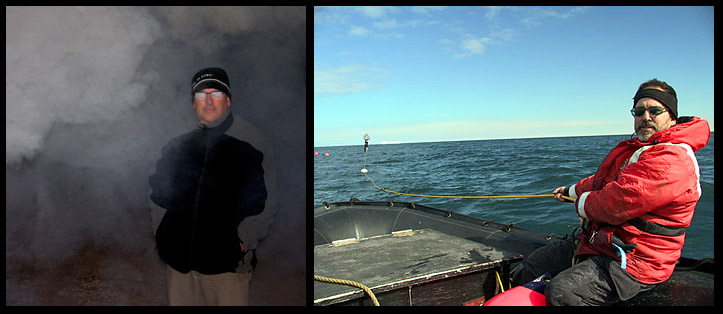Biography

Wade Jeffrey was born in Richmond, Virginia and spent much of his early life on the Chesapeake Bay. After realizing his career was also meant to be on the water, he completed a BS in Biology (Virginia Tech) and MS and PhD degrees in Marine Science at the University of South Florida. His introduction to field science was also his introduction to photography and extreme environments, a four-month expedition to the Dry Valleys of Antarctica. In addition to buying specialized clothing, he was encouraged to buy a good camera so as not to miss the opportunity to record “the highest, driest, and windiest” continent, but also the most pristine and dynamic. While the scientist’s tendency is to document, the unique vistas of the photographs reveal the beauty and power of nature that summons comparisons and contrasts to the fragile limits of life. Most of his research has involved how solar ultraviolet radiation affects marine microbes. Since UV is almost everywhere, his research projects have afforded the opportunity to travel extensively, often to some of the most extreme environments, including both polar oceans as well as the Atacama Desert, the driest place on earth. After that first trip to Antarctica, he always carries a camera into the field. He has since completed twelve trips to Antarctica, and no two days were alike, no two icebergs were same nor were any two penguins. The constantly shifting weather and icescapes allows for unique opportunities to observe the forces of nature, its shapes and patterns, and how biology interacts with the environment. In 2009 he had the opportunity to work in the Beaufort Sea of the Arctic Ocean. While it is easy to assume that the Arctic Ocean should be similar to the Southern Ocean, it was a remarkably different experience. While the weather was less severe, the ice was very different and the effects of climate change soon apparent. The wildlife was different and people live in the Arctic, but the open ocean is no one’s home and the remote suspension into nature was similar. Being aboard research vessels in the polar oceans offers the perspective of being part of the environment, not just observing from afar. His most recent trips have been to the Atacama Desert in northern Chile. Owing to its position between the Pacific Ocean and Andes Mountains, it is considered to be the driest place on earth. So what’s an oceanographer doing there? In the middle of these immense salt evaporite plains are small ponds and lagoons fed from groundwater coming from the Andes Mountains. The salt content of these ponds is often five to eight times saltier than the ocean, the sun is always shining, the air is thin, sometimes the water is hot, yet microbes thrive there. Here the salt plains meet ponds which meet the Andes Mountains. The intersection of these three environments provides a unique visual contrast from hypersalinity to snow covered volcanoes. The extreme environments to which he is drawn are, of course, scientifically interesting, but also fascinating in their severity and fragility, while teaming with life. His field expeditions always have a bit of adventure – how will he survive and work in these often inhospitable environments? While he has the advantage of modern technology, in a sense, he is also an extremophile, thriving where most people never get the opportunity to go. Artists Statement I have always been attracted to the outdoors, most often environments associated with water. The best of these, however, are when the water intersects with something else, whether its land, snow, ice, or mountains. The contrasting shapes in the landscape draw me as both examples of natural patterns, or potential chaos. I don’t consider myself to be a nature photographer as I only rarely focus on the organisms I see. Rather, it’s the environment in which the organisms live that draws me in. From a biological and scientific perspective then, it’s also how they survive. |
UWF Faculty Web Page |